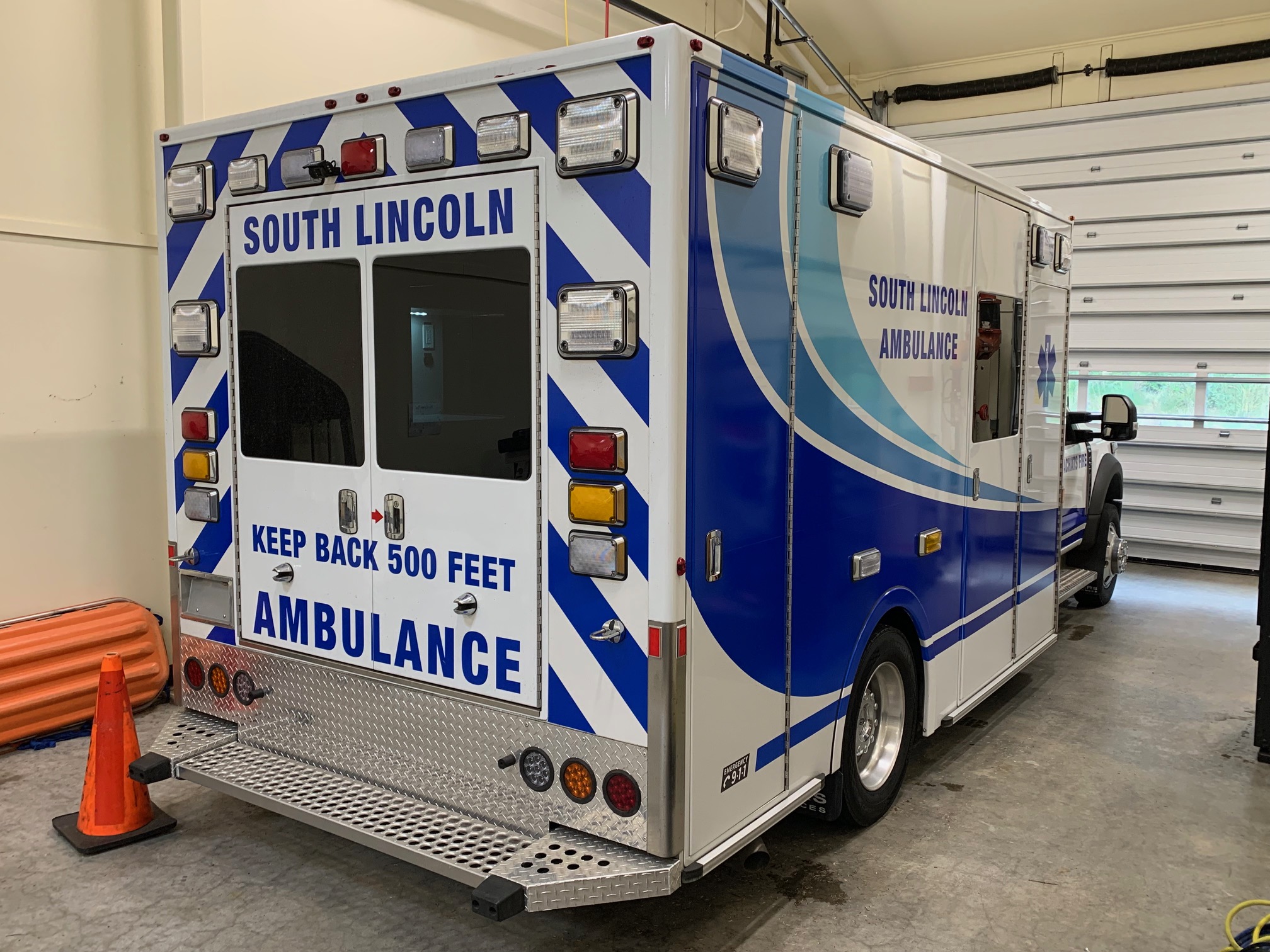
By GARRET JAROS/Lincoln Chronicle
YACHATS – Should the Yachats Rural Fire Protection District have a dedicated ambulance stationed in Yachats or not? That is the question – and it is going to remain the question for now.
After commissioning and then receiving a 22-page outside analysis to help decide the future of the long-running South Lincoln Ambulance and its relationship with Yachats Fire, the district’s five-member board concluded last week that now is not the time to make a decision.
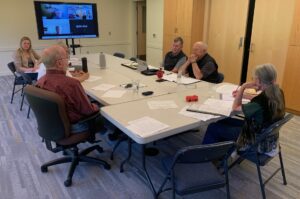
Board members met with the two representatives from the Special Districts Association of Oregon who wrote the analysis during the board’s regularly scheduled meeting June 9. The report, which board members noted delved deeper and revealed more than expected, was given to them May 6 to review.
The question the board is seeking to answer is whether the district should continue to staff the ambulance for SLA, modify the relationship, or terminate it?
While the report went into detail about the financial and staffing challenges, it also addressed concerns that board members have been hearing from firefighter/paramedics.
“Specifically, you went deep into the ambulance records and operational stuff and for at least for this board member, I was unaware of most of that,” said Doug Myers. “This is the first time I’ve actually seen some transparency as far as ambulance operations, which is good because then it gave us enough to be able to determine if this is something that the board should even entertain both because of finances, staff pay or capability at this point.”
Myers then asked the report’s authors if they could offer suggestions, viewed from the lens of risk versus benefit, where the board should start in making its determination.
SDAO consultant Roy Emery said “first and foremost” is figuring out the relationship between the two entities and then creating a road map to a desired outcome. Consultant Bill Anderson added there is a bit of an “identity crisis” about who Yachats fire district is — particularly because their review found a lot of references to volunteers.
“And at least in what we saw, the volunteer program is almost non-existent,” Anderson said. “So, at some point you need to recognize either you get on with the volunteer program or you move on past that.”
While the district had a lot of volunteers once upon a time, it is currently almost 100 percent reliant on paid staff, he added.
“You’re still operating in I would say almost kind of a 1960s mode when you did have a strong volunteer program.” Anderson said. “The community has changed and I think we show that in the report.”
The average age in Yachats is 60, according to the report, so it is a different demographic from cities with larger and younger populations where volunteers are more readily found, Anderson said, and that impacts what type of coverage it can provide.
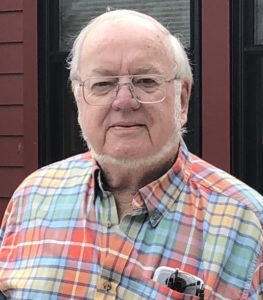
Board member Ed Hallahan acknowledged the lack of volunteers but said he is not sure how it has hurt operations.
“We have made up for it by shifting to all-paid positions,” Hallahan said. “And we’ve gotten enough money, I’m not saying there’s a whole lot more than what we desperately need, (but) we’ve gotten enough money to maintain it seems, a six-person frontline staff.”
“That has you on a teeter totter though,” Emery said. “And so that’s one of the concerns long term again, is the change from a total volunteer force to a paid force has used up all your tax dollars and more. You have a guaranteed rate and then you have two other levies that are out there …”
“The guaranteed rate is miniscule,” Hallahan interjected.
“Yeah, and so you’re on the that precipice all the time,” Emery said.
The district primarily receives revenue from five sources: A tax base rate of 29 cents per $1,000 assessed property value; a 2016 building bond of 69 cents per $1,000 assessed value; a 2022 local option levy of $1.59 per assessed value; a 2023 local option levy of 61 cents per assessed value; and $18,000 annual service agreement with the ambulance nonprofit.
Plan and set priorities
Emory emphasized the need for the district to better plan financially and set priorities to assure it can meet its obligations, which include maintaining and upgrading equipment and vehicles when needed.
At the crux of ambulance operations is staffing, and how that affects operations if two firefighter/medics are transporting a patient to a hospital when a fire call comes in.
“One thing that’s changed is back when you had a strong volunteer force your ambulance could be out on a call and you’d still have fire protection,” Anderson said. “Now you’re kind of a light switch. You’re either in an EMS (emergency medical services) mode or fire mode. And if you’re in fire mode, you’re not in an EMS mode … and you’re going to have to rely on mutual aid.”
Myers then asked board members if they had enough information from the report to make a decision whether the district should be “in or out of the ambulance business” and how they wanted to proceed?
It was clear from the board meeting in February, Myers added, that if the ambulance service is to survive “it’s going to be because the fire department is eventually running it.” But he said running it as a dual organization does not seem sustainable.
At that February meeting, Yachats Fire administrator and volunteer chief Frankie Petrick, who also serves on the three-person SLA board, made clear that for the ambulance service to operate independently it would need to hire its own paramedic crew — which it cannot afford.
Also clear is that it would take time for the district to get the proper licensing required to operate the ambulance service independently, Myers said, which means “we cannot exist without SLA for the foreseeable future…”
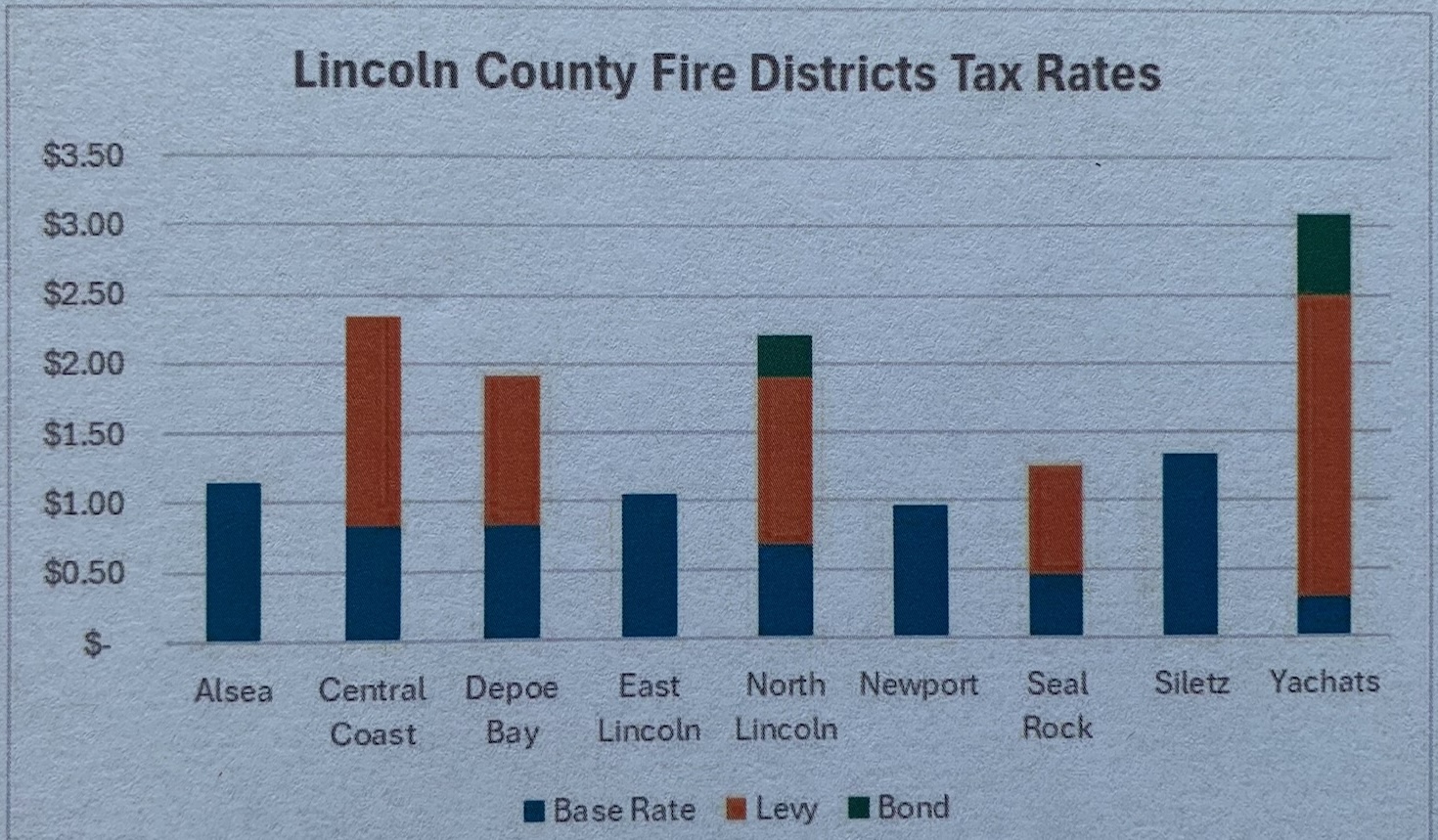
Report highlights
The report was arranged by five review elements: governance, finances, standard of cover, personnel practices, and a conclusion. Among the highlights it:
- Noted tensions within the fire district’s board, tension between district administrator and fire district board, and between the ambulance and fire district’s boards.
- Said the current structure has a paid district administrator acting as volunteer fire chief and volunteer ambulance chief, creating some confusion whether emergency response responsibilities are being fulfilled. The more common practice is the fire district board appoints a chief who works as an at-will employee responsible for the organization and its administration — including ambulance transport.
- Said the fire district heavily subsidizes the nonprofit ambulance service in the form of personnel services and fire station access. The $18,000 fee for service the district receives from SLA does not come close to covering the district’s cost.
- Noted the fire district’s 2024-25 budget was $2.33 million, broken down into $1.25 million for personnel, $490,950 for materials and services and a $597,840 carry-over.
- Determined that YRFPD’s budget rose 60 percent in past three years, or approximately 20 percent a year. The personnel budget increased 45 percent over that period, or 15 percent a year. The money the district receives from the ambulance nonprofit for services represents 1.4 percent of the district’s personnel budget and less than 1 percent of its total budget.
- Said YRFPD is the only fire district in the county that also provides ambulance services. Other districts rely on Pacific West Ambulance Service.
- Pointed out that the Yachats district has the highest tax rate of $3.18 per $1,000 assessed property value for all fire districts in the county. The two local option taxes are critical in the delivery of the district’s current services. The levies are staggered so that every three years the district must request a renewal.
- Said that the district’s current minimum staffing practice lists two firefighters per shift. The administrator and assistant administrator are no longer responders. For all practical purposes the district no longer has a volunteer force.
- Said that given YRFPD’s current staffing, its automatic and mutual aid agreements with Central Oregon Coast Fire & Rescue and Seal Rock Fire Department need to be tracked to assure reciprocity — especially because two Yachats firefighters could be on an ambulance call when needed.
- Noted that a fire chief capable of responding as a duty officer would benefit the district and the mutual/automatic aid “two in, two out” requirement which mandates that for every two firefighters entering a hazardous environment at least two more firefighters must remain outside, ready to assist if needed.
- Said South Lincoln Ambulance’s base rate for an advanced life support incident is $1,250 with a $25 per mile fee. PacWest charges $1,489 with a $21 per mile fee. A 2024 survey of fire departments in Oregon showed an average rate of $1,775 and a $24 a mile fee.
- Showed that South Lincoln Ambulance had a small profit in 2022 and 2023 but lost money in 2024.
Recommendation highlights
The SDAO’s report recommended that:
- The Yachats fire district should consider alternate funding sources and develop a five-year financial plan that is updated annually and that adopts an apparatus and major equipment replacement plan.
- Resolve an unauthorized loan from the fire station bond and issues about the remaining funds in the bond.
- Develop and benchmark a realistic district standard of cover and review annually for compliance; update mutual aid agreements to reflect realistic resource sharing; consider adding peak activity resources during predictable high hazard events.
- Benchmark South Lincoln Ambulance’s services and practices against other fire departments annually, review its billing practices, consider nearest hospital transport guidelines, consider adopting a separate resident/non-resident rate; and consider developing a hardship policy.
No decision
In closing, Myers asked fellow fire board members whether they have enough information to make a decision — to continue the joint operation with the ambulance nonprofit under its current staffing agreement with a couple of minor changes, or work toward consolidation?
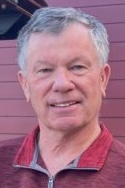
“Right now, in my opinion, we don’t have the staff to continue this arrangement,” Myers said. “We would have to have at least two more hires, so when the ambulance goes out we’re still in the fire business – we’re still in the response business for our taxpayers.”
Whether an ambulance is stationed in Yachats or not, the fire district is required to respond to 9-1-1 calls. But it does not have the duty to transport patients.
Hallahan recommended taking “baby steps” instead of reaching a definitive decision to be sure whatever action the board takes is the correct one because they won’t get a second chance.
“It’s easy to screw it up when you get into a positioning that you’re going to be sorry for in the future,” Hallahan said. “So my position right now is to say – slow down. We’re not going to get hurt over the next three months if we don’t do anything, if we just keep thinking about this whole thing.”
He added that he is not sure taking three months or six or even a year will bring any new “discoveries” but that it will give the board time to consider.
Board president Katherine Guenther, who attended the meeting online, echoed that caution and said she wants to be “real clear” about what is being decided.
“I agree with Ed that we’ve got to get this right,” Guenther said. “And this isn’t something we can do haphazardly.” The board is taking steps like this report so it can make a “full informed choice,” but “I’m not fully prepared to make an informed decision today.”
Board member Drew Tracy said it was interesting that the consultants said the fire district and ambulance service have an identity crisis “and we do” because when an ambulance shows and has EMS capabilities people are not really sure if it’s YRFPD or it’s SLA responding and it’s actually a combination.
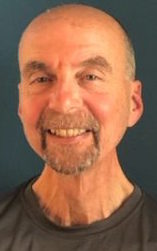
“I’m for keeping EMS,” Tracy said. “I’m for consolidating under one brand name – YRFPD. I’m for a fulltime fire chief not a volunteer chief who has total responsibility of both aspects. And also, if you look at it, 72 percent of our calls are more EMS related. We’re an aging population. We need to keep, in my opinion, an ambulance on site…”
He also encouraged the district to energize its volunteer program.
Board member Stan Wagaman acknowledged the district has a way to go but said although it is not the most efficient it is surviving the way it currently operates.
“So if we could slowly make our plans, take these baby steps, I think eventually, years down the road we we’ll be where we want to be,” Wagaman said. “Let’s develop a plan first and see, get the initial things nailed down. What are our priorities? What do we need to do to get to where we (want) and just take the first couple for now.”
Myers suggested a work group to figure out the details and draft a plan moving forward and asked Hallahan and Wagaman if that would cover their concerns?
“Initially, if it’s very short term,” Wagaman said. “I still have concerns about … if we have an EMS call, we get a fire call, we’re totally dependent on someone else to do that (through mutual aid) with us. And then vice versa, if we are on a fire call, we still have to have somebody help us if we have an EMS call … we need to concentrate on that.”
“The issue of dual response might be a real issue,” Hallahan said. “But I’m not sure we have the data right now that tells us how many calls we’ve ever missed in the last 10 years.”
“I’m also not convinced that that’s a problem we need to be solving right now,” Guenther said. “So I’d be curious to see how much of a real issue that is.”
- Garret Jaros covers the communities of Yachats, Waldport, south Lincoln County and natural resources issues for the Lincoln Chronicle, formerly YachatsNews, and can be reached at GJaros@YachatsNews.com





















So basically this report has validated what’s been in question by a lot in the community — which is the fire district absorbing the lion’s share of the cost of an ambulance service with district funds. There’s a reason no other fire district has ambulance service. It’s not financially feasible and it takes away from the prime mission of fire and rescue. When you look at it, their lack of a volunteer system is being subsidized by automated agreements that cover the district for fire emergencies when their ambulance crew is out of pocket. The real solution for the entire south Lincoln County is consolidation. It solves the problems pointed out in the report and it eliminates redundancies of costs and provides a much more robust system for all the communities.
Not just the south county! The entire county should be in one consolidated fire district with a uniform countywide tax levy and substations staffed according to population served, factors that influence vulnerability to fire and other relevant factors. Pacific West should take over ambulance service in Yachats. I wish someone with legal expertise would step up and write a county ballot measure to accomplish this. I do not know the legal niceties of how to reconcile the various levies and bonds the various districts have if one big district was to replace them.
Under state law the process would be every fire district currently in the county would have to simultaneously vote to dissolve the current district and vote for the countywide consolidation. This would require all the boards of directors to be in favor of pushing those ballots. Just in South County alone it’s been a struggle. Central Coast Fire is committed to bringing consolidation to South County because it makes sense financially, it makes sense operationally and in the long run it’ll be a significant benefit to the taxpayer by eliminating redundancies across three districts by hopefully creating one centralized district for the entire community.
Agreed…something I’ve been reporting to the YRFPD board and this news source for years (before the accident).
Thanks for voicing this, Jon!
We have known this for years, people of Yachats, come on now. They needed someone from outside to reveal this issue that has been here for over two decades? A lot of “its always been done this way” attitudes in the area. Moving the fire station, building taxes and the brewhaha over that land acquisition as well reveals some of these issues with the ambulance service and fire department.
Great analysis by SDAO. Interesting that none of the board members made reference to the fact that YRFPD has the highest tax rate and by the graph it appears to be much higher (~40%) than the next district. They are equally silent about the fact that YRFPD’s budget has increased 60% over the last 3 years or approximately 20% per year along with their proposed 2025-2026 budget increase from $2.3M to $3M (~30%). It’s also a little disheartening to hear a lack of action or plan in the near term from the board, but rather more of a “let’s think about this” and we shouldn’t act too quickly fearing we might make a bad decision. I wish the board could acknowledge and look at solutions in a timely manner that are more efficient much like some of the earlier comments made to this story.
Thanks for voicing the concerns of many in our community, Jon, Glen, and Bill.
I agree and would like to add:
There’s been a purposeful shift of the financial burden for ambulance service to the taxpaying landowners, rather than the tourism industry which uses most of this service.
The YRFPD refuses to update their reporting “categories” for 9-1-1 calls in their database, with one of their excuses being they don’t have the staff to make an accurate report. If these reports were accurate, they would clearly state the difference between what is a local resident call, what calls are from business owners, and which come from visitors/tourists (based on home address). The wording is intentionally vague on these reports.(I’ve read them and calculated the preponderance of tourist/visitor calls).
If these reports matched what tow truck companies are required to report to ODOT, they’d offer a clearer financial picture of where our tax dollars (through endless levies) are being spent.
Last, I love Frankie and have known her for many years, but I agree with the commissioned evaluation, as reported in this article, that having her wear two hats contributes to the confusion. “The more common practice is the fire district board appoints a chief who works as an at-will employee responsible for the organization and its administration …”
There are major legal issues in this outdated relationship between the non-profit ambulance and the district fire department, which I brought up to the YRFPD board in their 4/14/25 meeting. This is the source of the “confusion” between who is “Paid” staff, and who is a “Volunteer” for the SLA.
Although the YRFPD says they need more time to consider this new report, this is not new information for them, and they’ve had plenty of time to make this needed change.
No more tax levies. No more supporting the old, illegal, model for South Lincoln Ambulance.
Thank you for taking the time to read this, and if you’d like to confer with me about the research and data I’ve collected, feel free to email me.
In the spirit of building a safer local community…
Katrina Wynne